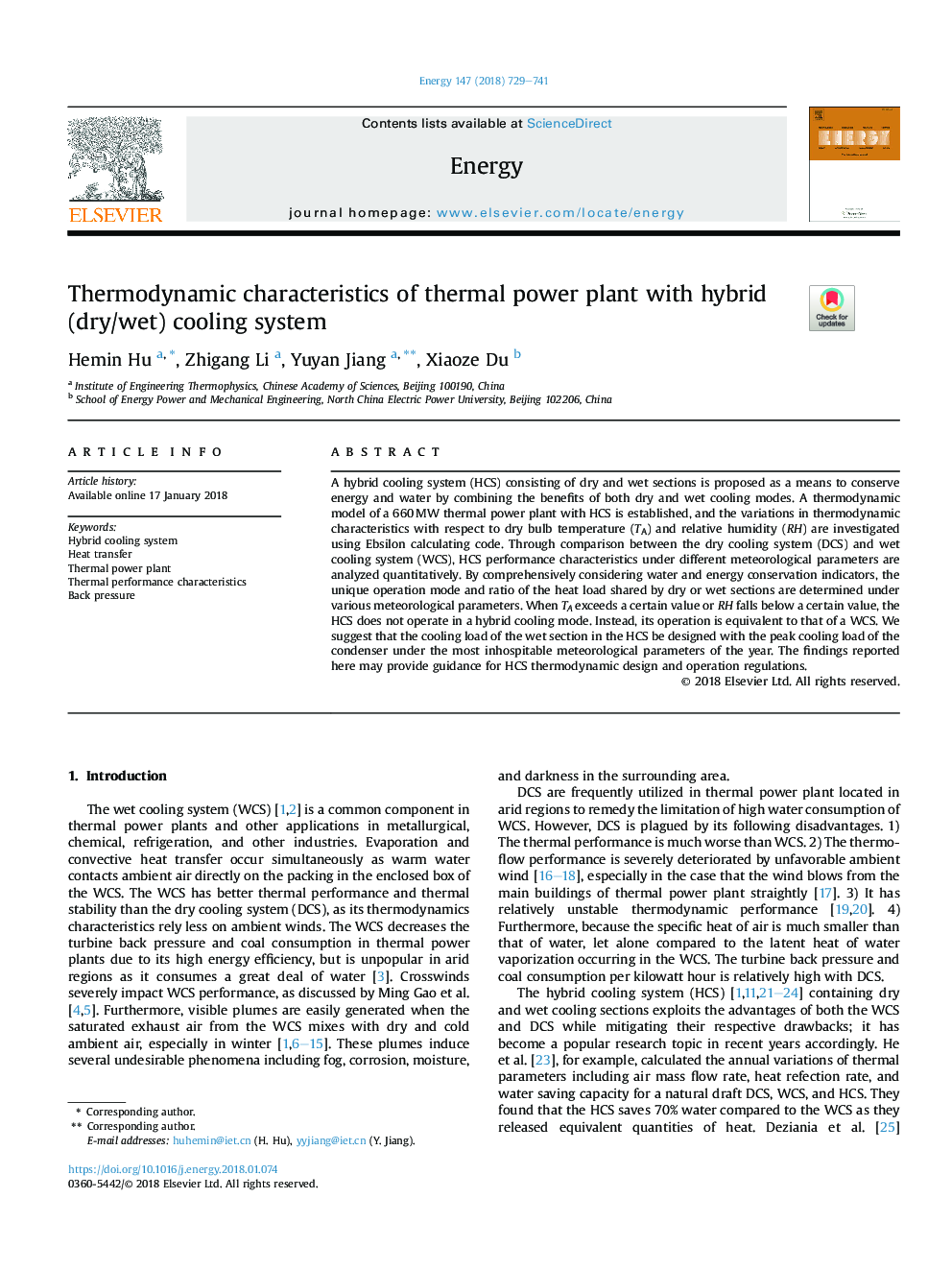| Article ID | Journal | Published Year | Pages | File Type |
|---|---|---|---|---|
| 8072199 | Energy | 2018 | 13 Pages |
Abstract
A hybrid cooling system (HCS) consisting of dry and wet sections is proposed as a means to conserve energy and water by combining the benefits of both dry and wet cooling modes. A thermodynamic model of a 660â¯MW thermal power plant with HCS is established, and the variations in thermodynamic characteristics with respect to dry bulb temperature (TA) and relative humidity (RH) are investigated using Ebsilon calculating code. Through comparison between the dry cooling system (DCS) and wet cooling system (WCS), HCS performance characteristics under different meteorological parameters are analyzed quantitatively. By comprehensively considering water and energy conservation indicators, the unique operation mode and ratio of the heat load shared by dry or wet sections are determined under various meteorological parameters. When TA exceeds a certain value or RH falls below a certain value, the HCS does not operate in a hybrid cooling mode. Instead, its operation is equivalent to that of a WCS. We suggest that the cooling load of the wet section in the HCS be designed with the peak cooling load of the condenser under the most inhospitable meteorological parameters of the year. The findings reported here may provide guidance for HCS thermodynamic design and operation regulations.
Related Topics
Physical Sciences and Engineering
Energy
Energy (General)
Authors
Hemin Hu, Zhigang Li, Yuyan Jiang, Xiaoze Du,
